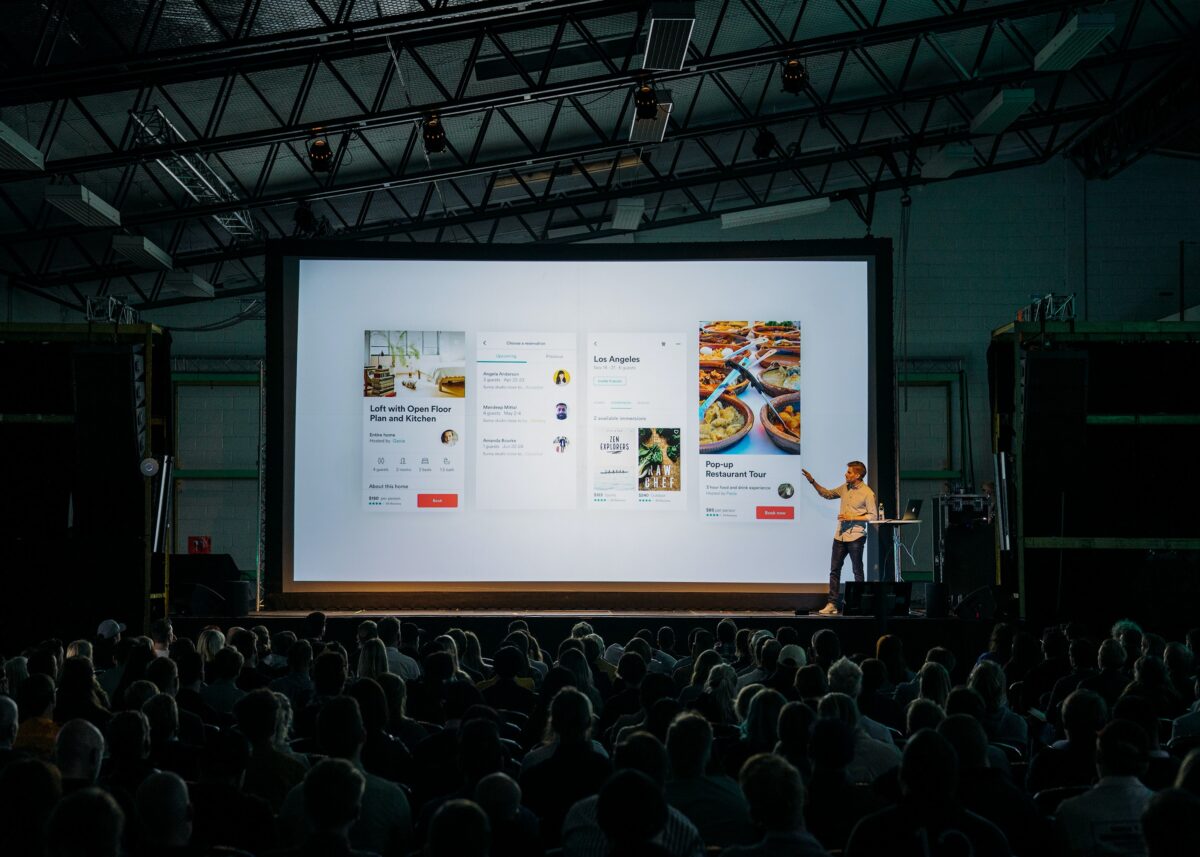
CES, digital health and the things that Matter in 2023
Written by: Jade Woo
Together with our partners, the team at Bontouch had the opportunity to visit the annual Consumer Electronics Show in Las Vegas earlier this January. While there, we spotted some key trends we want to share in case you’re curious about the future of smart home tech and digital health. And don’t worry if you have yet to hear of the latest trends; we’ll guide you through it all.
One of the main things we observed was a big drive at this year’s CES to showcase smart home products compatible with Matter, making it clear that the future of smart homes will focus around it.
But what is Matter, and why is it important?
Matter is an industry-unifying standard for smart home devices and connected products that is IP-based and open-sourced. It was designed and maintained by the Connectivity Standard Alliance to create secure, reliable, and seamless smart home products.
In general, smart home products and platforms are notorious for requiring users to download multiple apps for each of their different devices, as well as each device requiring a different setup process. As a result, users try to perfect using a single app to control all their systems and are experiencing app fatigue with every smart home device they add to their home.
Current smart home products rely heavily on proprietary apps developed by device manufacturers for set up, control, and other usages of a connected product, which is why users are expected to download a different app for each of their smart home products. Users should also expect to learn and understand various setup flows, where some devices rely on users connecting to a temporary Wi-Fi network for set up, and others utilize Bluetooth® for set up, among other methodologies.
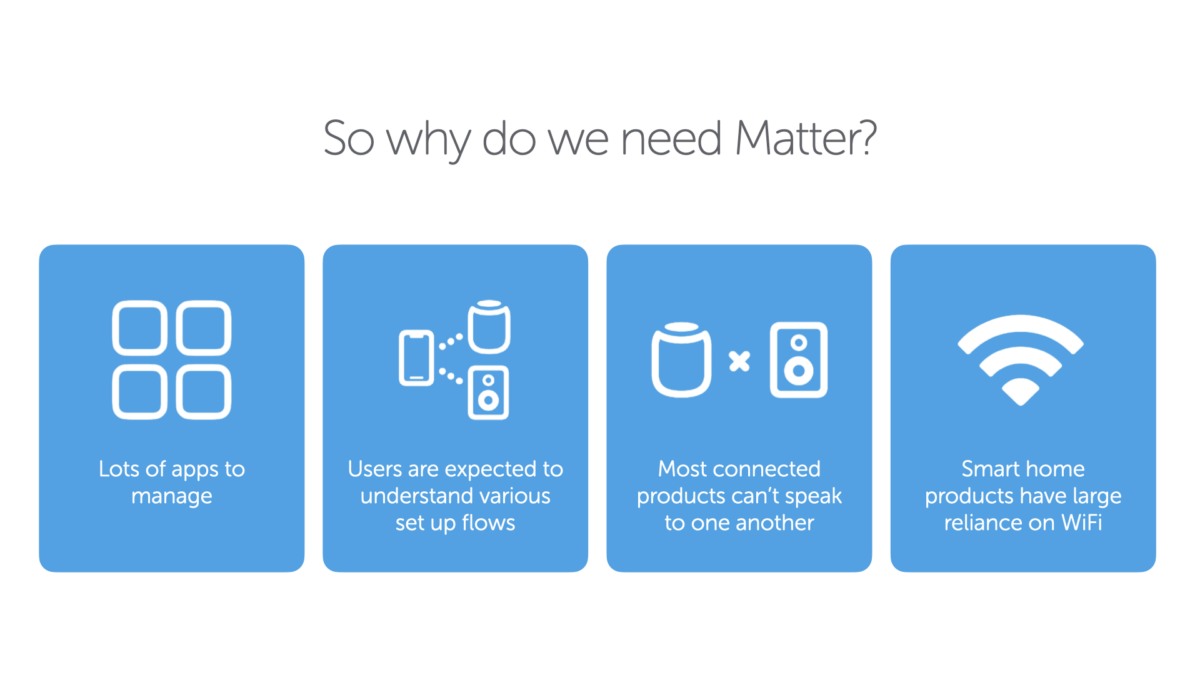
Integrations with major platforms such as Apple Home, Google Home, and Alexa require major investments from device manufacturers to build additional software integrations and services. In some cases, it may also require additional hardware to comply with platform certification requirements.
We’ve learned that users want their devices to speak to each other – and still, most connected products are currently incapable of communicating with each other, making automation complicated and preventing the home from becoming truly smart. Smart home products also rely on a stable connection to the internet and lose all or most functionality when the home loses internet connectivity. Not very smart, in the end.
Why was Matter a big deal at CES – and why should you care?
At this year’s conference, we saw a lot of smart home companies taking Matter very seriously by coming out with products that either already is compatible with Matter, or have plans to support Matter in the future. Amazon’s Alexa, Google, Samsung, and Schneider Electronics displayed smart products compatible with Matter, leading the way to the future of smart home technology.
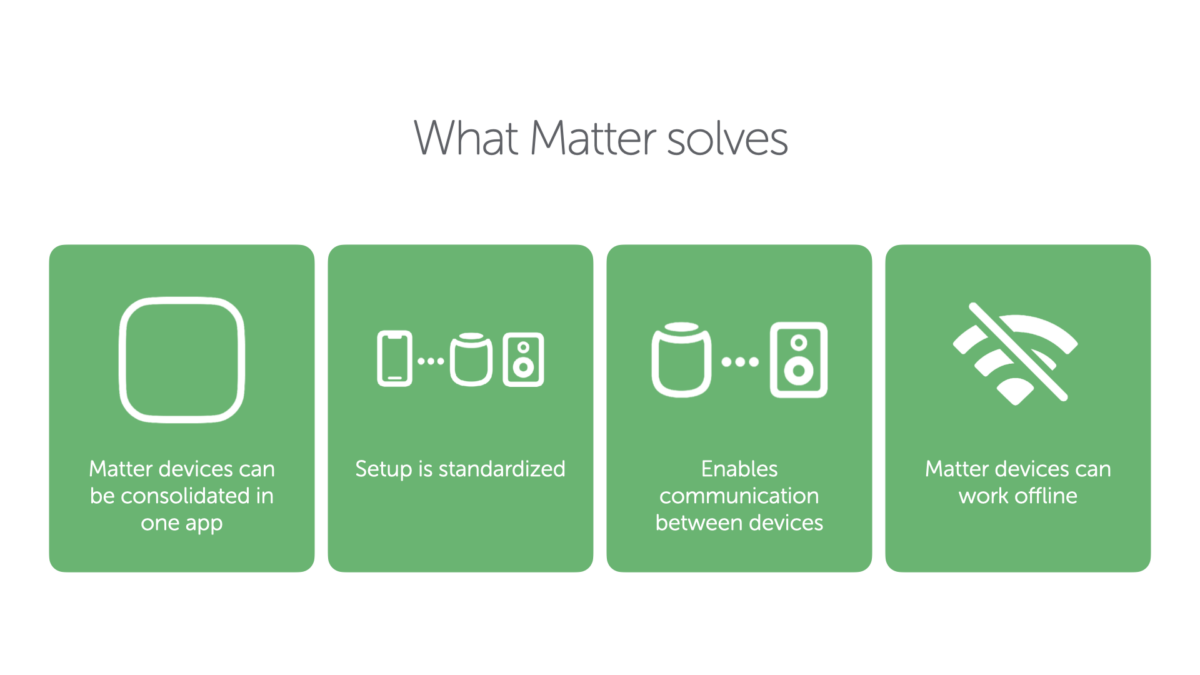
Having these key players already on board shows an industry-wide initiative to adopt Matter as the industry standard and how it will shape how smart home device users will interact with their smart products in the future. Smart Home platforms and device makers need to take the initiative to make their products Matter compatible, or they risk losing their users. As more and more devices become compatible with Matter, users will expect their platforms to integrate seamlessly – and if the smart home device makers cannot meet those expectations, users will turn elsewhere. Especially if devices have a complicated setup process, users will turn to an alternative that doesn’t require them to adapt to an unfamiliar process.
Device makers should also consider how their devices can work with users’ overall ecosystem of smart home products. Matter simplifies automation and connection between different smart home products, so users will expect their devices to work together to create the ultimate smart home.
Simply put, matter is the future of smart homes, and will become a staple name just like the internet is in most households.
Digital Health, and the usefulness of data
There was a heavy emphasis on Digital Health at CES, with many new products that helped track your overall health, such as wearables to even a urine lab. With an influx of devices to help users gather data about their health, experts at CES asked what can and should users do with this data.
Already, there seems to be a trend to provide users with products that will allow them to have more autonomy over their health data. However, these devices tend to only give their users data, but no clear actionable insights that can be used to change their health-related behaviors and patterns.
At a panel discussing Hybrid Care, experts spoke about how there will need to be new jobs created to help doctors and users interpret this influx of data so that it can be actually used rather than just creating noise for both doctors and users. It’ll be interesting to see how the industry will adapt in the future so that users and doctors are able to interpret the health data and how the infrastructure for housing all this health data will evolve over time.
For us at Bontouch, these are exciting developments. Giving users access to and ownership of their health data is an important step forward – very much in line with how other types of digital personal information are handled. Together with our partners within digital health, we are busy developing the digital layers that help visualize and make sense of it.
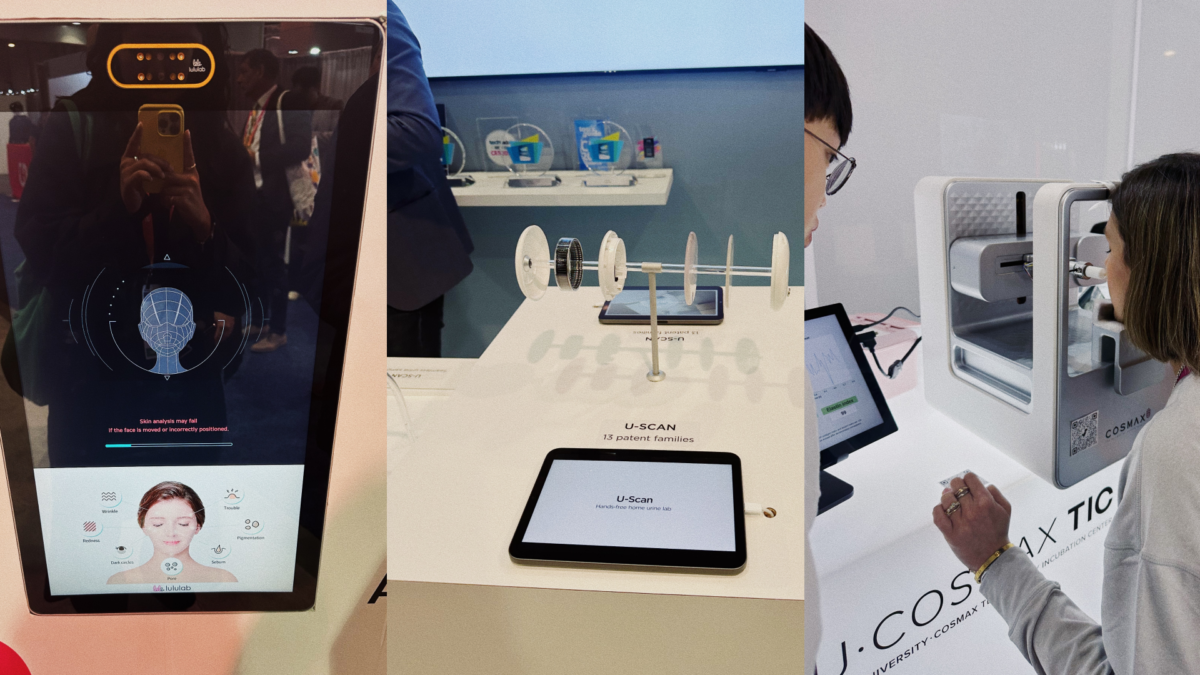
What about the hardware in Digital Health?
Some of the most interesting health products we saw were at Withings, CareSix, and ible Technology. Withings had created “the first hands-free connected home urine lab” called U-Scan that would analyze its users’ urine, send that data to the app, and analyze the results to teach their users about their nutrition levels or their menstrual cycle. They also created a specific U-Scan that can be used for medical research.
ible Technology created the world’s first pair of wearable air purifiers that also duo as noise-canceling earbuds. It can effectively reduce inhalable airborne coronavirus, H1N1 virus, pollen, allergen, PM 2.5, and bacteria.
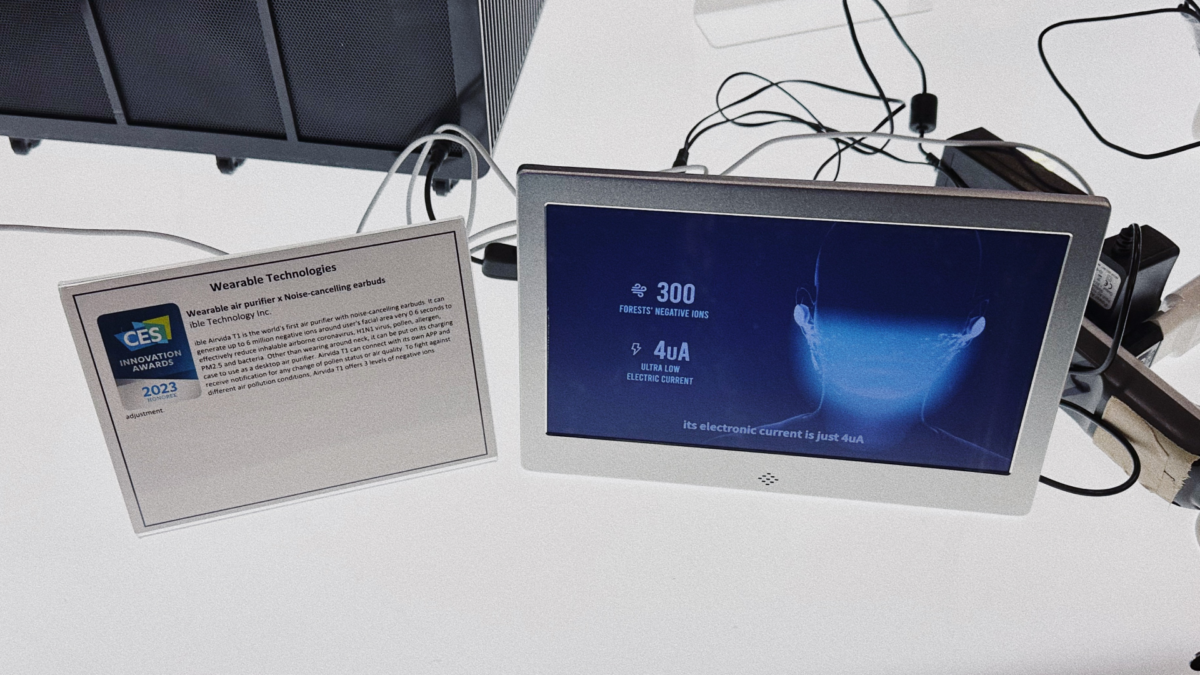
Pet Health was also very prominent at CES, with CareSix coming out with Coton Sense 1, a smart dog collar that translates the precise health status of a dog to its owner and veterinarians. The collar utilizes a multi-sensor that monitors a dog’s biosignals. Then it analyzes that data through an AI algorithm to detect abnormalities and identify early warning signs of a potential disease.